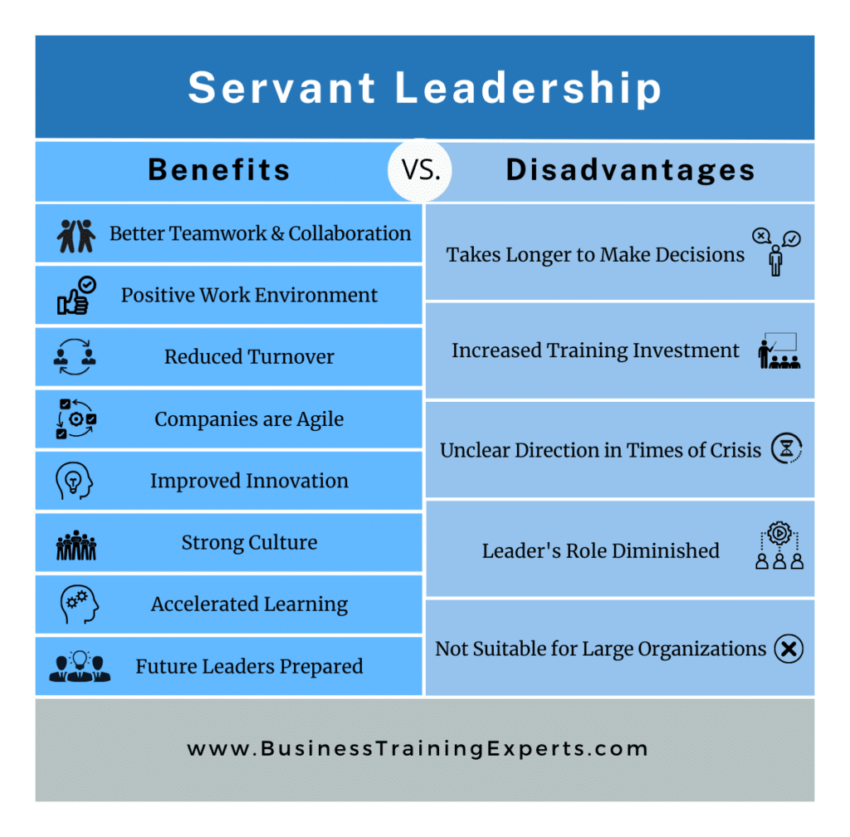I have seen firsthand the impact that different leadership styles can have on a company. That’s why I was excited to work with a new CEO who was open to exploring different approaches to leadership. One of the topics we discussed was servant leadership, a leadership style that I am particularly passionate about. In this article, I will delve into the benefits of servant leadership and provide guidance on how to implement this style in a company. By the end of this article, you will have a better understanding of what servant leadership is, why it’s beneficial, and how to adopt it in your own leadership style.
I have seen firsthand the positive impact that servant leadership can have on a company. By prioritizing the needs of others, leaders can create a culture of trust, respect, and collaboration. This can lead to increased employee engagement, higher levels of productivity, and a more positive work environment.
One of the key benefits of servant leadership is that it can help to build strong relationships between leaders and their team members. When leaders are focused on serving their team, they are more likely to listen to their needs, provide support and guidance, and create opportunities for growth and development. This can lead to increased trust and respect between leaders and their team members, which can ultimately lead to higher levels of job satisfaction and retention.
Another benefit of servant leadership is that it can help to create a more positive company culture. When leaders prioritize the needs of others, they create an environment where employees feel valued and supported. This can lead to a more collaborative and inclusive workplace, where employees are more likely to work together to achieve common goals.
Implementing servant leadership can be challenging, but there are several strategies that leaders can use to make the transition easier. One approach is to lead by example, demonstrating the behaviors and attitudes that are associated with servant leadership. Leaders can also provide training and support to help their team members develop the skills and mindset needed to succeed in a servant leadership environment.
In conclusion, servant leadership is a powerful leadership style that can have a positive impact on both employees and a company as a whole. By prioritizing the needs of others and focusing on serving one’s team, leaders can create a more engaged and satisfied workforce. While implementing this leadership style can be challenging, the benefits are well worth the effort.
Overall, servant leadership can lead to a more collaborative and supportive work environment. By prioritizing the needs of others, leaders can build trust and respect with their team, which can ultimately lead to increased productivity and success. Additionally, servant leadership can help to create a sense of purpose and meaning for employees, as they feel that their work is valued and contributing to a greater good. Ultimately, adopting a servant leadership style can lead to a more fulfilling and rewarding work experience for both leaders and employees alike.
Implementing Servant Leadership
Implementing servant leadership requires a shift in mindset and a willingness to prioritize the needs of others over one’s own needs. Here are some tips and strategies for successfully adopting a servant leadership style:
1. Lead by example: As a leader, it’s important to model the behavior you want to see in your team. This means demonstrating a willingness to serve others and putting their needs first.
2. Listen actively: Servant leaders prioritize the needs of others, and one of the best ways to understand those needs is by actively listening. Take the time to listen to your team members and understand their perspectives.
3. Empower your team: Servant leaders empower their team members to take ownership of their work and make decisions. This means giving them the tools and resources they need to succeed and trusting them to do their jobs.
4. Foster a culture of collaboration: Servant leaders prioritize the needs of the team over their own needs, which means fostering a culture of collaboration and teamwork. Encourage your team members to work together and support each other.
5. Practice empathy: Servant leaders are empathetic and understand the needs and feelings of their team members. Take the time to understand your team members’ perspectives and show empathy when they are facing challenges.
By implementing these strategies, leaders can successfully adopt a servant leadership style and create a more engaged and satisfied workforce.
I have seen firsthand the positive impact that servant leadership can have on a company. By prioritizing the needs of others, leaders can create a culture of trust, respect, and collaboration. This can lead to increased employee engagement, satisfaction, and productivity, as well as a more positive company culture.
To successfully implement servant leadership, leaders must be willing to shift their mindset and focus on serving their team. This means actively listening to their needs, providing support and resources, and empowering them to succeed. It also means leading by example and modeling the behavior they want to see in their team.
While implementing servant leadership may require some initial effort and adjustment, the long-term benefits are well worth it. By creating a culture of servant leadership, leaders can build a strong and successful team that is motivated, engaged, and committed to achieving the company’s goals.
Originally posted 2023-04-26 15:55:29.
